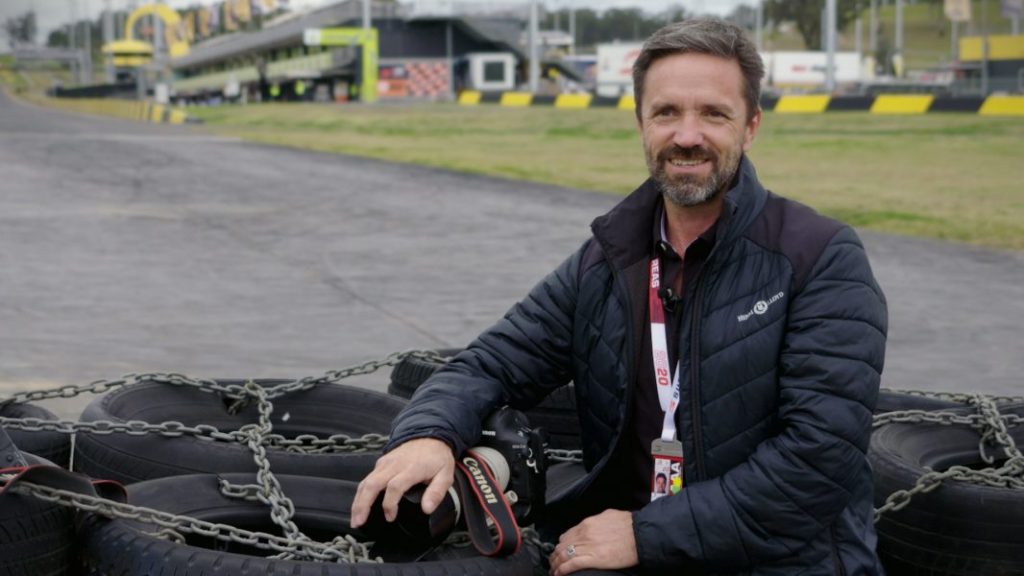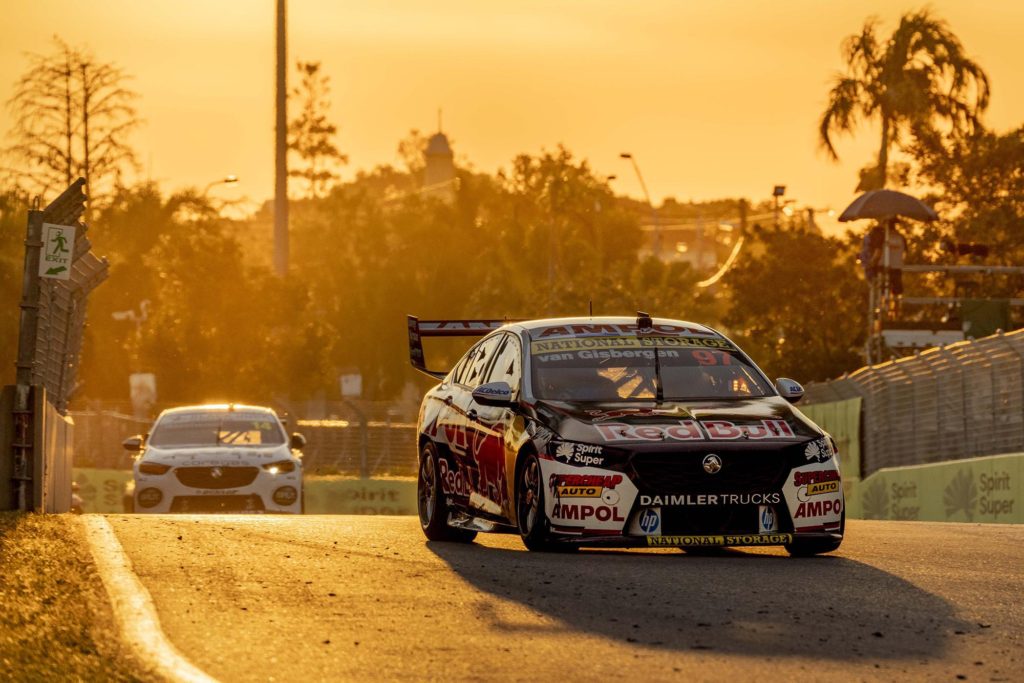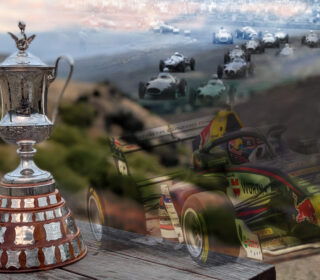How to become a Motorsport photographer

Ever thought you captured that perfect photo? We have all been there; you whip out your phone and freeze that moment forever.
However, using your phone to get a nice photo and using expensive equipment worth thousands of dollars are completely different.
And these are not skills you can learn overnight.
When it comes to photographing motorsports there are few better then Mark Horsburgh, who is the official photographer for Supercars.
Mark, a long-time fanatic of the sport, has been snapping shots of drivers from his teenage years. He went on to become the official photographer for the competition in 1997 and since then has not missed a single event.
We spoke with him to see what it takes to become a motorsport photographer.
Lead image: Courtesy Supercars.com
Mark’s Route to Supercars photography
Like any profession you need to develop an interest in the field. For Mark it was photography in which he had a keen interest in from a young age.
It was not until he began tagging along with friends to motorsport events that he found his love of the sport too.
In an interview with Supercars last year, Mark revealed that he would often sneak into events with mates and pretend to play the role of the real photographers. Funny how things turned out!
The important thing to remember though when you are starting out is that any experience is valuable.
“One of my first jobs was working in a photographic studio, which also had photographic retail attached to it, that was it in a nutshell getting into photography,” Mark said.
Trying to get to the top is not going to happen at the snap of your fingers.
Mark highlighted his route into Supercars initially began with photographing mates at go kart racing and it slowly developed into something he realised he could make a living from.
“I just started out by going to local motorsport events, and my friend turned brother-in-law was racing go karts. So, I would go along and just take photographs of him and his mates racing go karts,” he said.

“All of sudden people began buying photographs off me and that then I realised there is a bit of an opportunity to make some money. So, I started going to more go kart meetings and making more money.”
“And I guess it was a natural progression. It is the same as the go kart drivers want to become racing car drivers and all of a sudden I thought, shit, I’d really like to get into the motorsport side of things.”
Mark’s big break occurred on a day he snuck in at Surfers Paradise.
“The thing that triggered magazines and that side of things was when we were at lakeside one day, again we had snuck into the racetrack and Dick Johnson actually crashed. I ran down and got pictures of his car upside down in the ditches and Dick crawling out of the car,” Mark said.
“And I sent it off to them and it got published, I made a couple of dollars out of it and had my name under it. And right from that point on I knew this is what I want to do.”
Eventually after years of patience and sending in photographs to magazines Mark had his opportunity for Supercars.
“I was shooting a lot of motorbikes and cars, and then I happened to know the people who were starting Supercars up in the media side of things. And I just asked what are the chances of being your photographer and they said yep. And been there ever since.”
..We were at Lakeside one day, again we had snuck into the racetrack and Dick Johnson actually crashed. I ran down and got pictures of his car upside down in the ditches and Dick crawling out of the car..
Mark Horsburgh on getting a lucky photographic break
Advice on making it in the industry
It is all well and good knowing how someone else had their fairy-tale go, but no two stories are the same.
So, we asked Mark what sort of things people looking to get into the industry should know.
“I guess if I am giving anyone starting out in the industry advice, it’s to be patient and persistent,” he said.
“You have to constantly knock on those doors and constantly be putting yourself in front of people. But you have to be patient.”
“You are gonna get knocked back a few times but the strong survive. The ones who have the thicker skin and can endure the knock backs are generally the ones that survive in the industry.”
Mark is not wrong, there is a place for those who work hard enough because professional photography is a huge industry.
According to industry market research company IBISWorld, the Australian professional photographic services is a one-billion-dollar industry in 2021.
Of course, the profession is not without challenges “and probably the biggest hurdle is getting the best access to getting the best photographs,” Mark said.
“Some of the best tracks around the country like Phillip Island and Bathurst, as a spectator you can get just as good a picture as I can get. Because you don’t have any obstacles apart from drunken fans next to you.”
“But a lot of the best pictures are taken from a little bit further back, through the crowd and over the top of fans to give a sense of atmosphere.”
“If you can’t get the passes initially it doesn’t mean you can’t still get great shots and hone your skills and craft,” he said.
“Generally, you need to have a publication or someone your working for who will give you a letter. You can show that to the organisers and if they see fit, they will give you pass.”
“And once you get your toe in your pretty right from that point on, but you just got to be persistent and work hard at it,” Mark said.
The perks?
Obviously having spent 24 years at Supercars, you would assume Mark knows everyone.
But in reality, “everybody goes by nicknames, nobody goes by their real name, its quite an Aussie thing I suppose. But there are guys in teams I have known for 15, 20 years and I still do not know their first name, but I know their nickname.”
And as Supercars official photographer Mark has always been in tow with the rest of the drivers and officials on overseas journeys.
“I’ve travelled everywhere that Supercars has gone over the globe. Whether it a public relations thing in the middle of a warzone or whether its jumping into a black hawk’s helicopter or going into a US aircraft carrier,” he said.
“And I get to tag along with the drivers, take photographs and enjoy the same perks they do.”
Working in motorsport photography has been a rich and rewarding experience for Mark and has opened doors that has allowed him to work outside of the sport itself.
“I’ve pretty lucky over the years, I have covered every sport there is. From table tennis to lawn bowls, to the Olympics and so on. So, I guess there isn’t a sporting event I have not photographed over the years.”
Liam Webster-McAllister is a RMIT journalism student, currently in the final stages of his course. He’s joined TRT as part of the university’s work placement program.











